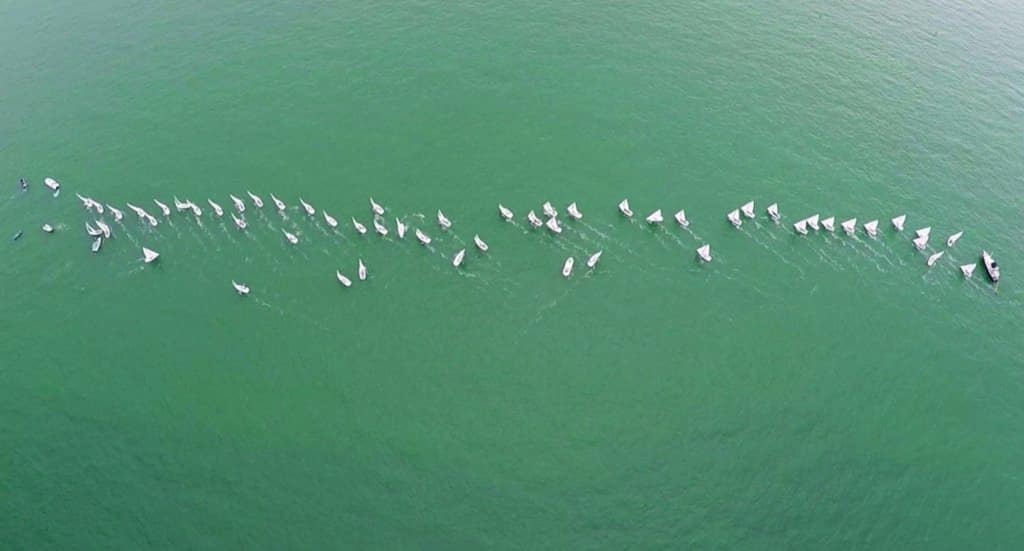
Recognizing Pre-Start Shifts
There’s a lot going on in the final minutes of the pre-start, and a keen eye to what’s happening up the course and with your own sails can help you recognize, and react to, a last-minute shift.

There’s a lot going on in the final minutes of the pre-start, and a keen eye to what’s happening up the course and with your own sails can help you recognize, and react to, a last-minute shift.

Don’t cover early, do cover late.

The second lap of a windward-leeward racecourse is just as important as the first. Look for more opportunities for clear passing lanes.

Join the layline parade to the weather mark too early or too late, and you’ll struggle to round. Pick the right moment, and you’ll capitalize at the top of the beat.

Even the best tacticians pick the wrong side on occasion. When that happens, the key is to identify things aren’t going well and move to minimize the damage.

These funny boat and sailing phrases help make teaching easier.

Not all sea breezes are created equal. To know which way to go, you need to know their origin.

Upwind or down, the key for crews is to feed information about incoming puffs to the skipper.

Whether you’re on port or starboard tack, the desired outcome of any crossing situation is the same: emerge in control of your destiny.

Everyone is bound to have an occasional bad start. If and when you do, just look for the exit signs and make your move when opportunity knocks.

A starting line with a favored end opposite of where you want to go can throw a wrench in your plans, Terry Hutchinson sorts out options when things get tough.

Terry Flynn reflects on the lessons learned sailing in a one-design fleet to keep in mind on the race course.

There’s a lot going on in the final minutes of the pre-start, and a keen eye to what’s happening up the course and with your own sails can help you recognize, and react to, a last-minute shift.

Don’t cover early, do cover late.

The second lap of a windward-leeward racecourse is just as important as the first. Look for more opportunities for clear passing lanes.

Join the layline parade to the weather mark too early or too late, and you’ll struggle to round. Pick the right moment, and you’ll capitalize at the top of the beat.

Even the best tacticians pick the wrong side on occasion. When that happens, the key is to identify things aren’t going well and move to minimize the damage.

These funny boat and sailing phrases help make teaching easier.

Not all sea breezes are created equal. To know which way to go, you need to know their origin.

Upwind or down, the key for crews is to feed information about incoming puffs to the skipper.

Whether you’re on port or starboard tack, the desired outcome of any crossing situation is the same: emerge in control of your destiny.

Everyone is bound to have an occasional bad start. If and when you do, just look for the exit signs and make your move when opportunity knocks.

A starting line with a favored end opposite of where you want to go can throw a wrench in your plans, Terry Hutchinson sorts out options when things get tough.

Terry Flynn reflects on the lessons learned sailing in a one-design fleet to keep in mind on the race course.
Sign up for Sailing World emails to receive features on travel destinations, event listings and product reviews as well as special offers on behalf of Sailing World’s partners.
By signing up you agree to receive communications from Sailing World and select partners in accordance with our Privacy Policy. You may opt out of email messages/withdraw consent at any time.